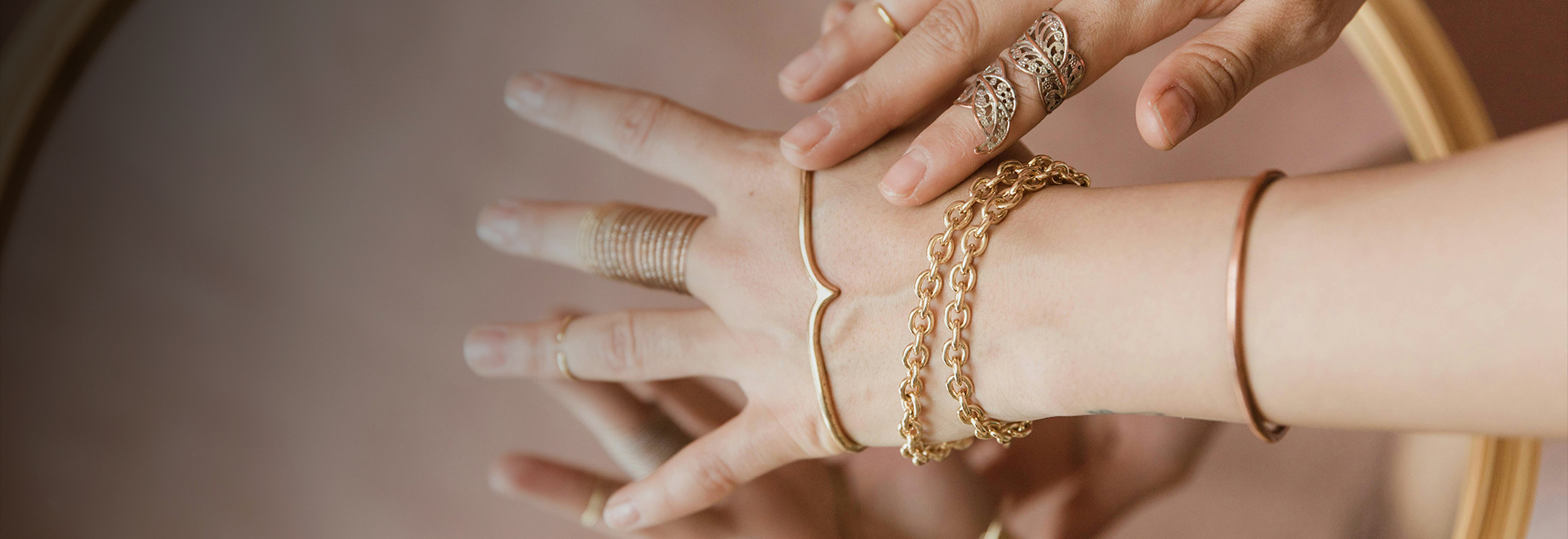What are the common metal jewelry making processes
Metal jewelry production process is rich and diverse, each process has its own unique charm and characteristics. Here are some common metal jewelry making processes:
Polishing process:
Principle: The use of polishing tools to modify the metal surface, so that it becomes smooth and bright.
Advantages: Make the jewelry surface with mirror effect, enhance the metal luster, improve the overall texture.
Frosting process:
Principle: The use of machine equipment to process the metal surface, so that the metal surface is no longer smooth, forming a frosted texture.
Advantages: Modify the beauty of jewelry, enhance the level and texture, and have non-slip effect.
Sand blasting process:
Principle: After polishing the jewelry, the quartz sand or river sand is sprayed on the exposed jewelry surface completely or partially by high pressure to form a more delicate frosted texture.
Disadvantages: Due to the frosting effect, the smoothness is low, it is easier to attach dust and other dirt, and it is more troublesome to clean.
Nail sand process:
Principle: The diamond needle of the nail sand machine is used to nail irregular and shiny convex surfaces on the gold surface to form a bright visual effect of the stars.
Advantages: Nail sand is more rough than sandblasting, more refraction surface, more shiny, rigid and soft, more three-dimensional and hierarchical.
Matte process:
Principle: Rub the jewelry with an agate knife to smooth the lines and edges of the jewelry edge, so that the metal surface is smooth and bright.
Advantages: Make the gold jewelry level more distinct, three-dimensional sense is stronger.
Silk process:
Principle: The fine gold process of making shapes by means of winding, pinching, silk and stacking.
Advantages: fine workmanship, magnificence, antique, with a strong palace atmosphere. Filament technology has a long history and is an important part of Chinese traditional metal technology.
Chipping process:
Principle: Use steel chisels of various shapes, hammer the steel chisel pattern on the surface of the block metal after the fire with a small hammer.
Features: The pattern is deep and shallow, full of artistic appeal.
Bluing process:
Principle: Silver as a body, coated with enamel glaze fired crafts, especially blue glaze and silver to match the most beautiful named.
Features: Bright colors, with the transparency of watercolor painting, is an auxiliary decoration process in the jewelry industry.
Mosaic process:
Principle: Gems, jade, shells and other materials embedded in metal or other hard materials.
Classification: According to the characteristics of the process can be divided into claw set, nail set, bag set, forced set, stuffy set, wax set and other types.
Stamping process:
Principle: The use of mold and stamping equipment to exert pressure on the surface of metal jewelry, so that it produces deformation, so as to obtain relief patterns.
Advantages: Suitable for the production of complex jewelry, such as lock bag, pig brand, etc.
3D hard gold process:
Principle: Mainly in the "electroforming" mode of production, by improving the hardness and wear resistance of gold, so that the product hollow larger.
Advantages: Higher hardness than traditional gold, more three-dimensional shape.
In addition, there are casting process, ordinary wire drawing process, colorful wire drawing process, ancient process and other metal jewelry production process. Each of these processes has its own merits, providing a rich choice for the diversity and beauty of metal jewelry.
Refer to 4 information sources





